T
We had the luxury of flying into Saigon (in the vernacular) airport or Ho Chi Minh City (to be technical) to be greeted by a placard with our name on it! We organised a tour around a few places in the Mekong Delta, with the same tour company we used up north, and they facilitated our visit so well and enthusiastically. Traffic crawled out west of Saigon city, average speed for the city is 20km per hour! The city incredibly has around 9 million people living in it. The police enforce the road rules, more so here than up north. So at least people stop at red lights – else they have the option to pay a fine at the police station or pay a lesser fee on the spot (a.k.a. bribe). Once out of the city, the landscape stretched into series of towns interspersed with fields. People and industriousness evident everywhere. We motored further west toward the provinces that the Mekong percolates through.
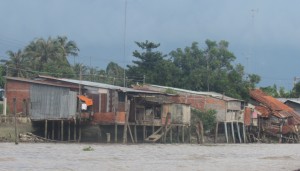
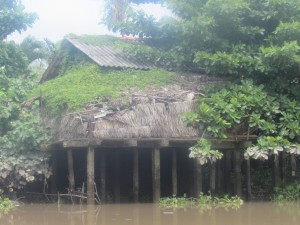
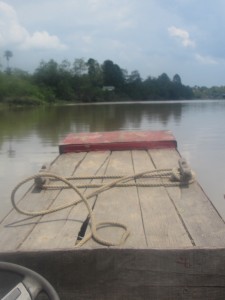

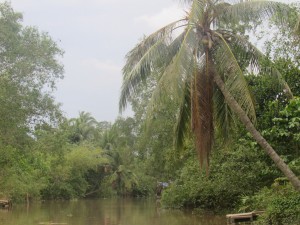
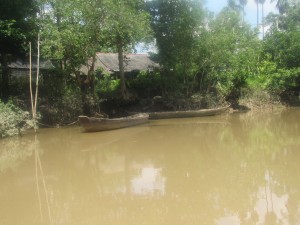
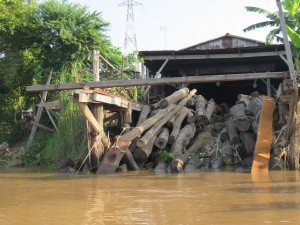
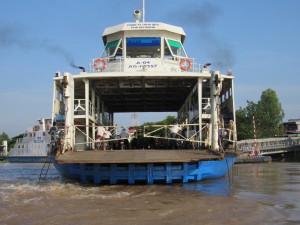
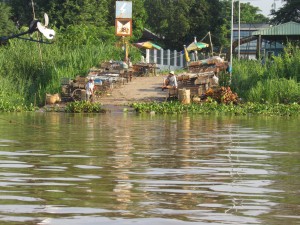
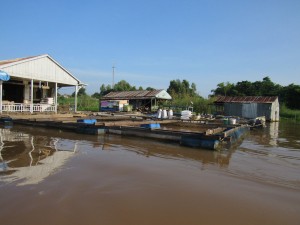
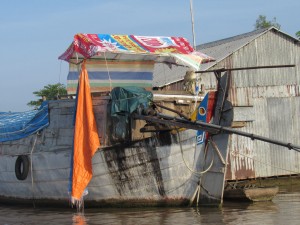 While in the Mekong region, it is difficult to avoid the metaphoric extension of the veins and tributaries of the river into your watery self; creeping and passing through your consciousness at all times, even at sunrise when we had the privilege of being on the river.
While in the Mekong region, it is difficult to avoid the metaphoric extension of the veins and tributaries of the river into your watery self; creeping and passing through your consciousness at all times, even at sunrise when we had the privilege of being on the river.
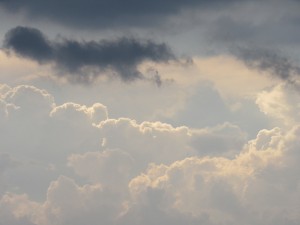
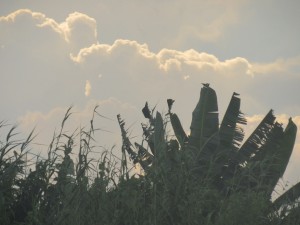
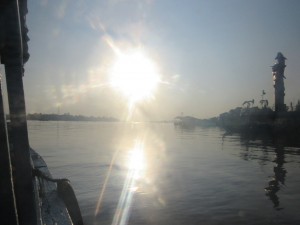
Giveaway signs of life on a river are the flood plains that have been cleared and turned into rice fields, the abundance of fish, the variety of smells, pervasive presence of water underfoot, the complete dependence of communities on the river, as their very survival is pitched on the river. Their lives face toward the Mekong, indeed some within the river, and their life is symbiotic with the river.
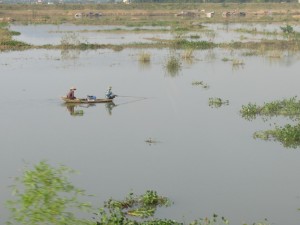
A trademark sign of Mekong boats are two eyes painted onto the front of boats. In former swampier times, when the area was less populated and in a more natural condition, crocodiles were present in the river. The eyes on the boat were to ward off the crocs, by creating monster boats!
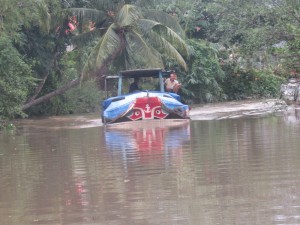
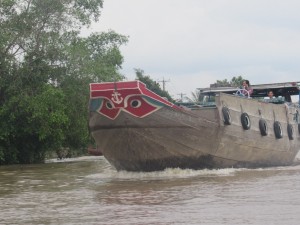
We saw floating villages, fish farms, landless people who extend their houses into the river on stilts (because they can, and it is a way of building a house), boat houses, floating markets for agricultural goods, farmers who use the river to transport their rice, cottage industries set up on the banks of the river to avail of the resources taken from the river, dredging the bottom of river for the foundations of houses. We saw people bathing and showering in the river (reminding me of the embarrassment I felt when Uncle John, home from the Philippines in the very early 1980s bathed with soap in the Clare river, telling us in a retort to his stares, that this is how a lot of people clean themselves), drinking from the river, dumping into the river. A dizzying array of uses – absolute dependence on the river(s), which provides sustenance for the communities there.
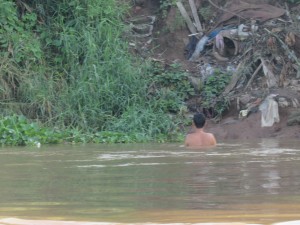
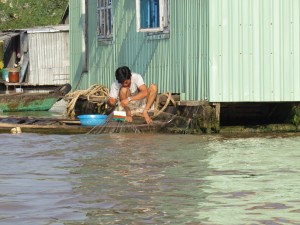
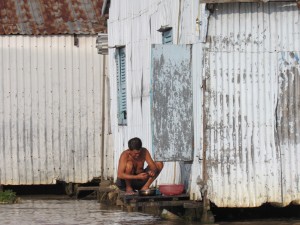
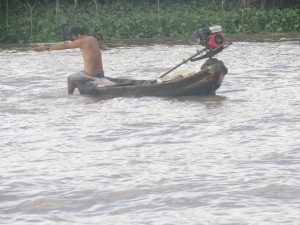 We visited two floating markets early in the morning – one a rather small affair, which when we arrived at about 6.30am was nearly over, as the traders begin assembling and doing business from 2am – and was provincial, with the small operators selling onto medium sized boats; the other in Mai Chau was a more serious affair, with the smaller provincial boats selling to larger wholesalers. With the building of bridges (many funded by foreign capital) in the last 10-15 years, the travel time to HCM city has reduced, so there is less activity on the water, so we were told.
We visited two floating markets early in the morning – one a rather small affair, which when we arrived at about 6.30am was nearly over, as the traders begin assembling and doing business from 2am – and was provincial, with the small operators selling onto medium sized boats; the other in Mai Chau was a more serious affair, with the smaller provincial boats selling to larger wholesalers. With the building of bridges (many funded by foreign capital) in the last 10-15 years, the travel time to HCM city has reduced, so there is less activity on the water, so we were told.
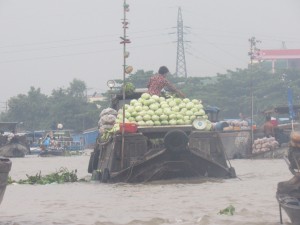
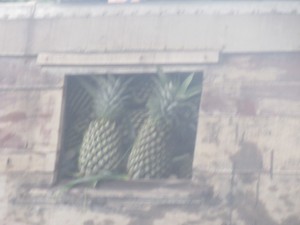
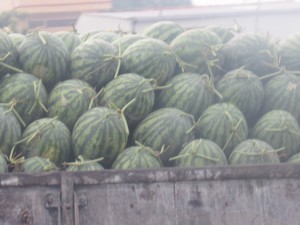
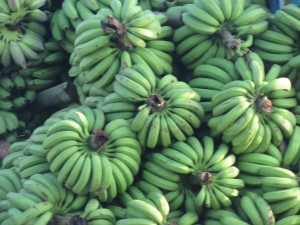
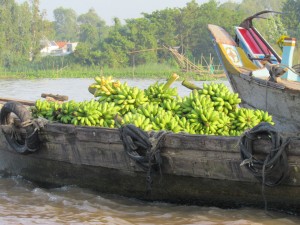
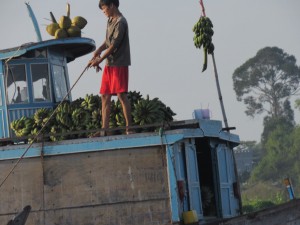
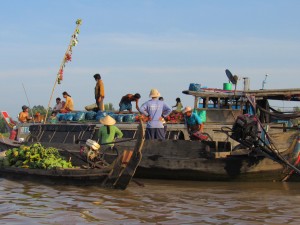
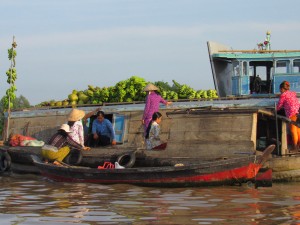
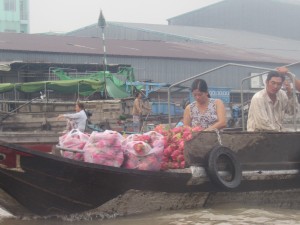
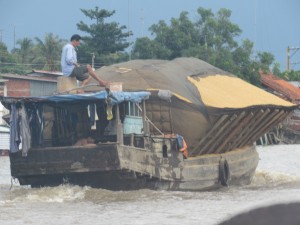 The Mekong delta area is an absolute food basket. They have four crops of rice here per year, as there is no Winter. Once separated, the husk is used for fuel. We went to a ramshackle rice noodle making family owned business, which is labour intensive and which would not pass any environmental health checks in our country! But the end product is delicious, and at times makes me wonder how over regulated we are regarding health and safety.
The Mekong delta area is an absolute food basket. They have four crops of rice here per year, as there is no Winter. Once separated, the husk is used for fuel. We went to a ramshackle rice noodle making family owned business, which is labour intensive and which would not pass any environmental health checks in our country! But the end product is delicious, and at times makes me wonder how over regulated we are regarding health and safety.
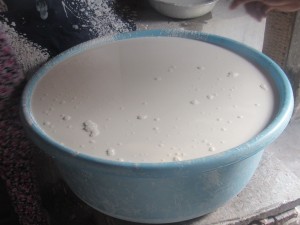
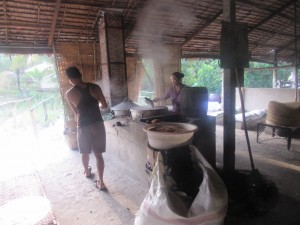
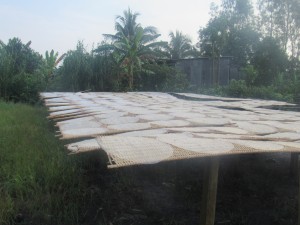
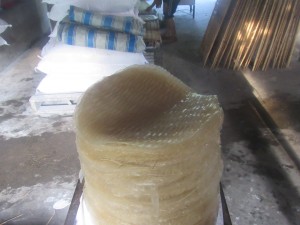
We saw coconuts galore, learned how each part is used and tasted the most deliciously sweet fresh-off-the-tree ‘fire coconut’ (because of its red colour). Our hospitable boat driver brought us to his house and farm. His smile was so great that it left every missing tooth uncovered! He scaled the trees in moments, collecting the orange colored coconuts for us. He even let the kids steer the boat, which they were thrilled with. More toothy grins!
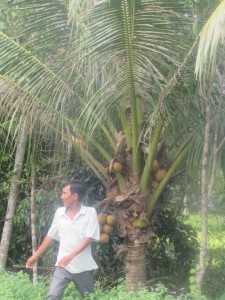
We also visited a coconut processing factory or cottage industry making sweets. The made “happy water” or rice wine too, and had a big bellows and furnace (burning rice husk) to make pop-rice (on black sand extracted from the river bed), to which coconut was added. Yum!
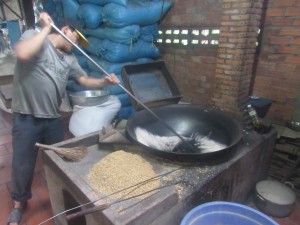
We haven’t tasted many overly sweet things, as all desserts have been fruit……and what amazing fruits there are: bomh-bon (no idea how to spell it) are a small beige fruit specific to the Mekong area, with a white flesh (not unlike lychee) but with pips; jackfruit, the biggest of which I have ever seen; pineapples are in season now, small and delicious; monkey bananas are served everywhere, and are in abundance. We got to try “magic fruit” which is a small red berry, and when you eat it, it does something very weird to your taste buds and makes sour or bitter foods taste absolutely overly sweet. We had som fun trying it out with kumquats and pomelo (which are also in season and magnificent dabbed in a little salt).
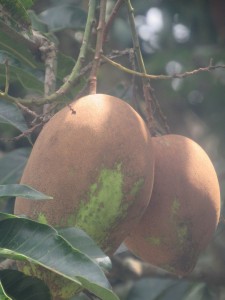
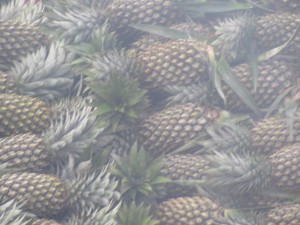
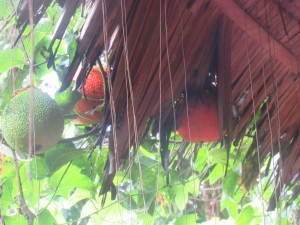
Food featured very strongly in our time in the Mekong! We ate like royalty in the homestays we visited, and had three large meals per day, with an oversupply of food (by generous hosts) that is very difficult to resist. Lots of fresh vegetables, lots of fish and lots of delicious pork (which I normally don’t like, but how they marinade and cook it was mouth watering!).
We learned about the use of palm trees, how the juice is harvested through a cut through the flower, then drained overnight into a container; we were refreshed and sweetened by a delicious palm drink and bought some palm sugar (useful for our Thai cooking!).
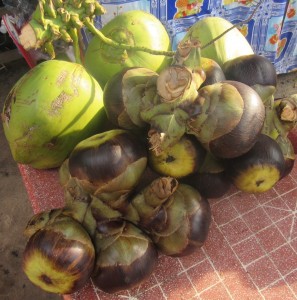
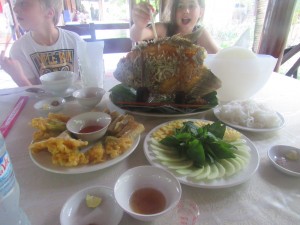
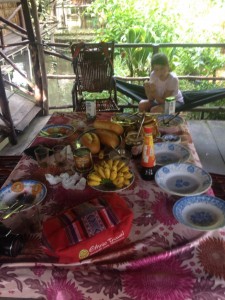
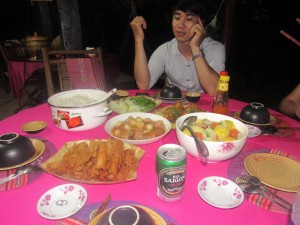
We also learned how to make coconut pancakes…..which Tadhg devoured with relish, Johnny McEldoo style….”they’d never seen before such a keen appetite”!
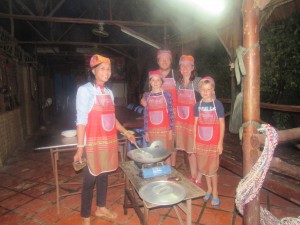
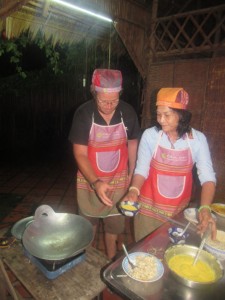
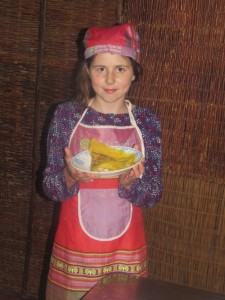
We have spent four days feasting and are satiated with amazing food, the sights sounds and feel of the water. We have spent the nights beside the river, and one night in a bamboo and coconut roofed house on stilts in the water, sunrises on the river and days spent soaking up all that the Mekong offers and provides. We truly have had a Mekong immersion, from our brief hop, skip, jump, cycle, kayak and boating through parts of the Mekong region.
Tadhg had a little full off the back of Daniel’s bike onto the road. Luckily he got more of a fright and few scrapes rather than any injury, and on this cycle he was wearing a helmet. The kids loved staying in homestays, with the chance of meeting other people/kids and fellow travellers. I think they are craving company other than ours! They have learned lots of new card games! We have randomly bumped into some French and German couples we met up north, so we must be following a similar path!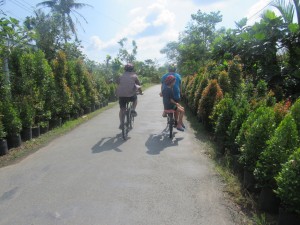
Some interesting things I have learned/observed:
Mekong women are considered very beautiful, so there are many arranged marriages still occurring, particularly with foreigners, particularly Korean men. Korean tv is very popular in Vietnam. We learned the local customs around marriage, dowries and social expectations.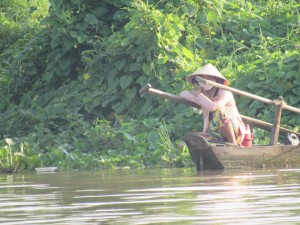
Women in Vietnam like to keep fair skin, so wear a face mask and non (hat) to keep the sun off their skin. I had seen a lot of women in Hanoi with faces and heads covered, also wearing special jackets that cover hands and necks, sometimes faces. I wrongly thought this was to limit the exposure to pollution while riding in traffic, but it is to avoid the sun.
Hammock ca-phes (cafes) line the main highway, to give bike riders a sleeping break when travelling back to the city. People stop for a power nap on the roadside. I imagine negotiating this traffic is exhausting. The kids have bought a hammock as they particularly liked lounging and swinging in one!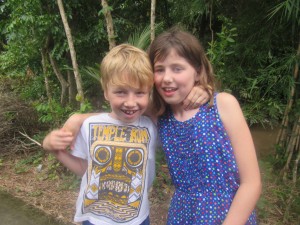
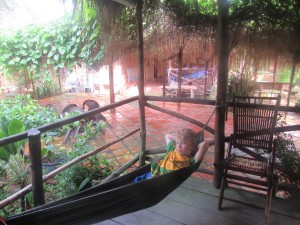
Vietnamese people love bonsai trees, and use plants for Feng Sui in their homes. Everything grows amazingly fast and well in the Mekong area, with the high temperatures, humidity and abundant freshwater supply. We cycled through the bonsai growing area of the Mekong, with perfectly manicured rows of mini trees and nurseries for plants. Some families have an array of pots in their watery gardens, which are used by family members and brought to the city during the lunar new year celebrations for decoration.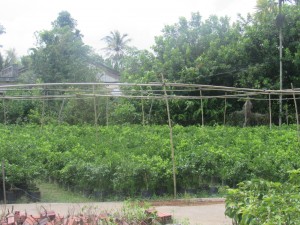
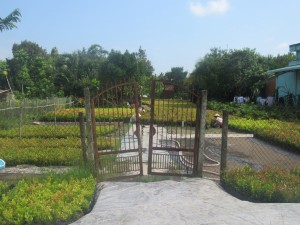
They even use bonsai trees in front of the floating houses, some of which were in poor to average rundown eroding condition, others which were maintained impeccably and really pretty.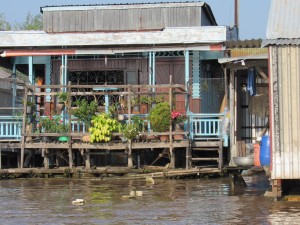
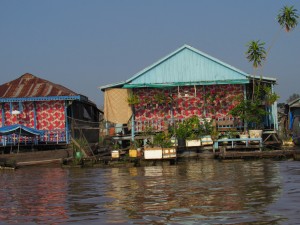
While travelling with my rugby loving family, and trying to catch the most relevant matches of the Rugby World Cup, I have noticed an absence of sports fields…..anywhere here.
I feel I have uploaded 1001 photos into this post, and have had to be selective from my photo album as to what I have included, as I have 1,000 more photos! Here are a few more pretty ones!
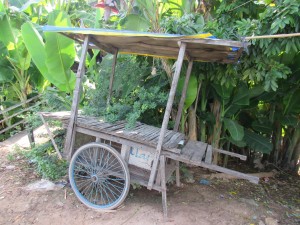
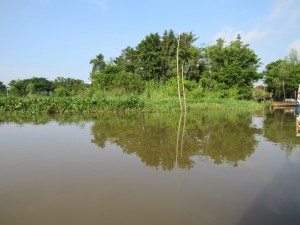
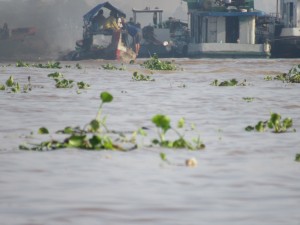


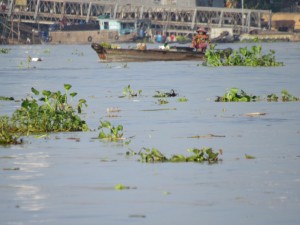
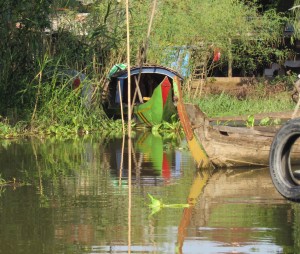
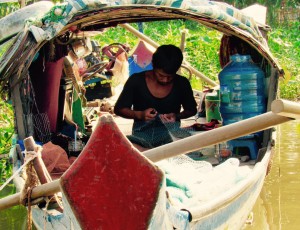 I particularly liked all the fish trappings and nets scattered up and down the river banks:
I particularly liked all the fish trappings and nets scattered up and down the river banks: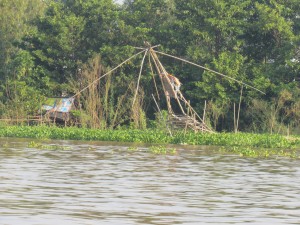
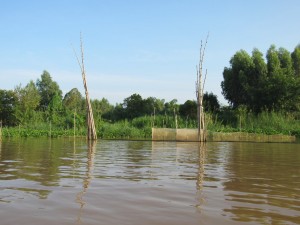
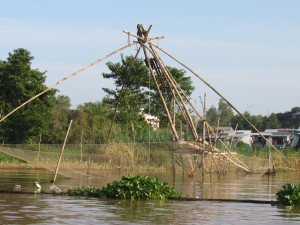
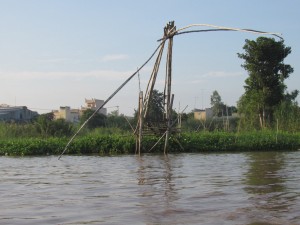
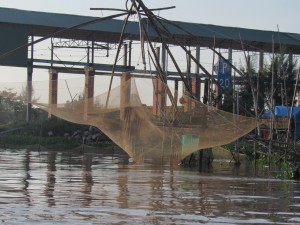
We also got to visit a fish farm, which has cages and nets under the house. The kids got to feed the fish, who flapped around in an absolute frenzy to get the feed, splashing water everywhere, in an exhilarating encounter. The price of fish the farmers has received has gone down in the last 5 years, and the price of feed has continued to go up. Many fish farmers are abandoning their trade, and we saw an example of a house that was out of the water, fishless, due to the economic pressure.
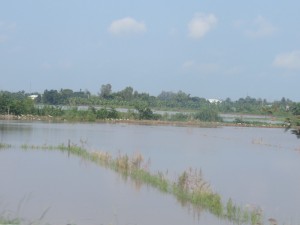
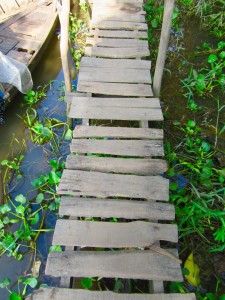
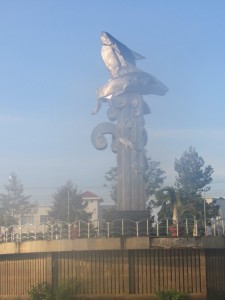
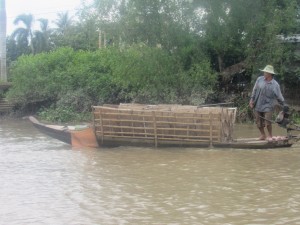
![IMG_5000[1]](http://catherine.network2innovate.com/wp-content/uploads/2015/10/IMG_50001-300x225.jpg)
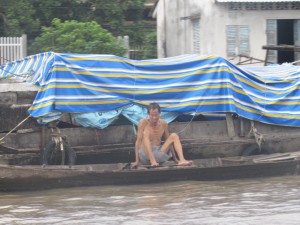
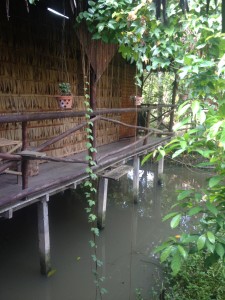
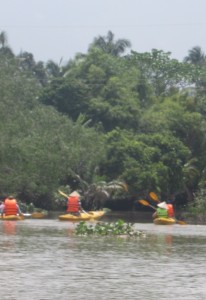
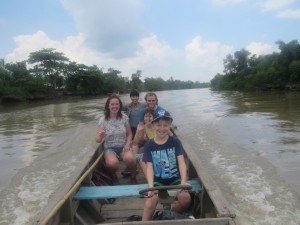
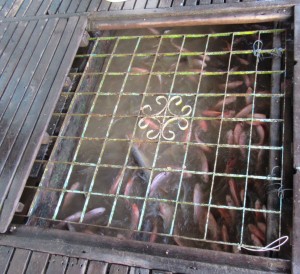
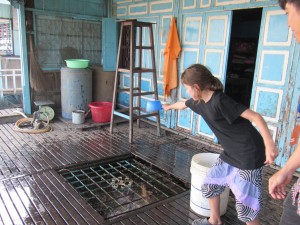
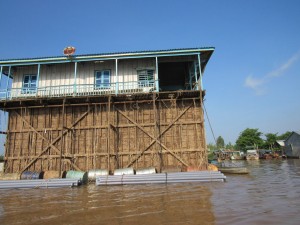
Leave a Reply to Tony senr Cancel reply